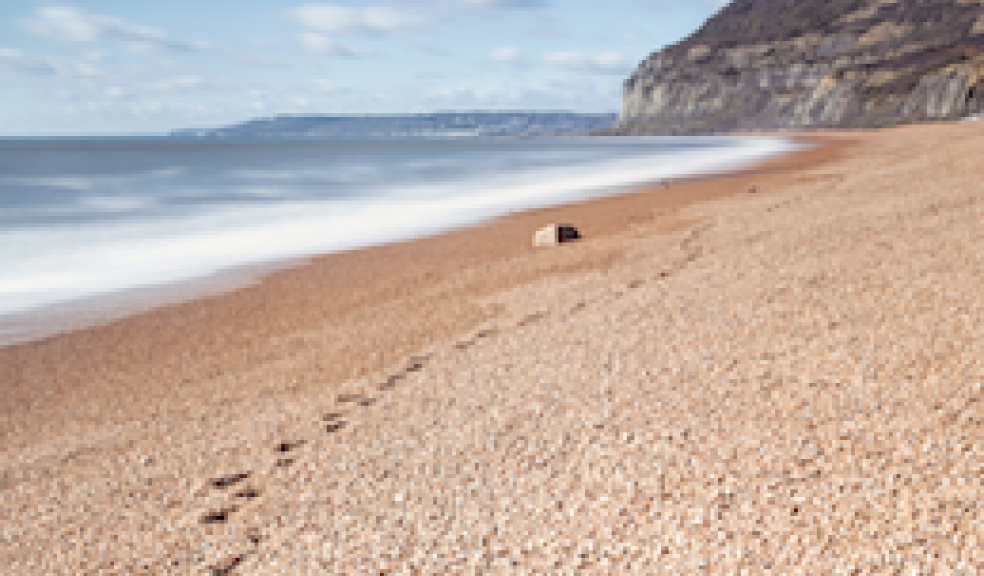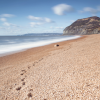
Planning applications for Jurassic Coast
Planning applications have been submitted at key locations on the Seaton Jurassic Coast.
Hotspots will be located at key entry points to Seaton and the Jurassic Coast including Fisherman’s Gap on the seafront, Axmouth Harbour, Seaton Hole and on the Axe Estuary Wetlands.
The current applications are for the erection of two large sculptured waves and interpretive pillars at Fisherman’s Gap, and for new timber decking creating a ship’s bow with seating and interpretative pillars to be erected at Axmouth Harbour.
If approved, the work will take place within the next 12 months so the hotpsots are ready prior to the opening of Seaton Jurassic in the autumn next year.
Councillor Ian Thomas, cabinet member for economy on East Devon District Council, said ”Hotspots are a key element of the new centre, ensuring that visitors not only have the opportunity to find out more about our stunning coastline at first hand, but also be reminded of the delights the centre itself has to offer.
Each hotspot will include a distinctive feature combined with the same core interpretation pillar, to ensure visitors know they have arrived at a Seaton Jurassic hotspot.
Hotspots will be another exciting addition for Seaton, extending the reach of Seaton Jurassic across the bay to build visitor experience and numbers, not just to Seaton Jurassic itself, but beyond to the whole town, seafront, and Axe Estuary Wetlands.”
Full details of the planning applications, and how to comment on the proposals, are available on East Devon District Council’s website, www.eastdevon.gov.uk via the planning portal. The applications are likely to be determined by Development Management Committee on 21 October 2014.
The interpretive pillars, to be located at each of the four hotspots, are constructed from textured timber, 1.86m high, appearing as three separate slabs set at an angle representing the rock strata from Triassic, Jurassic and Cretaceous periods. Each pillar will incorporate a graphic, a brass rubbing, a trail map dispenser, a QR code and a hidden geo cache reference. The geo cache box will look like a section of ammonite with a handle to rotate to open. Drawings of the proposed features are available on the website.
At Fisherman’s Gap, two large sculpted, three metre high waves are proposed to be constructed from stainless steel. The crests of the waves rise to form an impressive gateway sitting on the seawall. Being light in structure views through to Lyme Bay will not be obstructed. The interpretative pillars would be set at the outer ends of each wave.
Designer, Helen Shackleton, said: “I wanted to create something that acted as a gateway to both the sea and the town. The thought provoking words, ‘Waves shape the shore’ and ‘Shore shapes the waves’ are deliberately set on top of the wave almost as reflections of each other showing the interactions between land and sea taking place. One can be read on approach to the sea from the town while the other is read when approaching the town from the shore.”
At Axmouth Harbour, the gateway to the Undercliffs, the concrete seating area will benefit from new timber steps and a new raised seating platform decked with timber to form the ‘bow’ of a fishing boat installed. The ribs will be constructed from timber with natural rope net stretched between to form a handrail. A sculptural fish, constructed in mild or Corten steel, will be suspended beneath the seating area. Decking will also be provided at the lower level with an additional interpretive pillar highlighting the Undercliffs behind.
Harry Barton, chief executive of Devon Wildlife Trust who will manage the centre, said: “Seaton nestles in the middle of one of the World’s most amazing places for natural history. And it’s not just the geology and the wildlife that are so special. The town is steeped in a fascinating human story going back millennia. We want people to feel a real connection with this extraordinary sense of place, both past and present. I believe the best way to do this is to get out into the coast and countryside, feel the sea breeze on your face and hold the cold, sharp rocks in your hand. This is exactly what the hotspots are there to encourage people to do.”
Building is due to start on Seaton Jurassic, in The Underfleet, Seaton later this month with completion expected in the autumn of 2015. Seaton Jurassic has secured more than £4 million of funding with contributions from East Devon District Council, Devon County Council, Seaton Town Council, Heritage Lottery Fund, Coastal Communities Fund, Garfield Weston Foundation and Fine Family Foundation. Planning consent for the project was given in June 2013. Devon Wildlife Trust is going to manage the centre. Seaton Jurassic has benefited from tremendous support locally with the Seaton Visitor Centre Trust and the Jurassic Coast World Heritage team campaigning for many years.

















